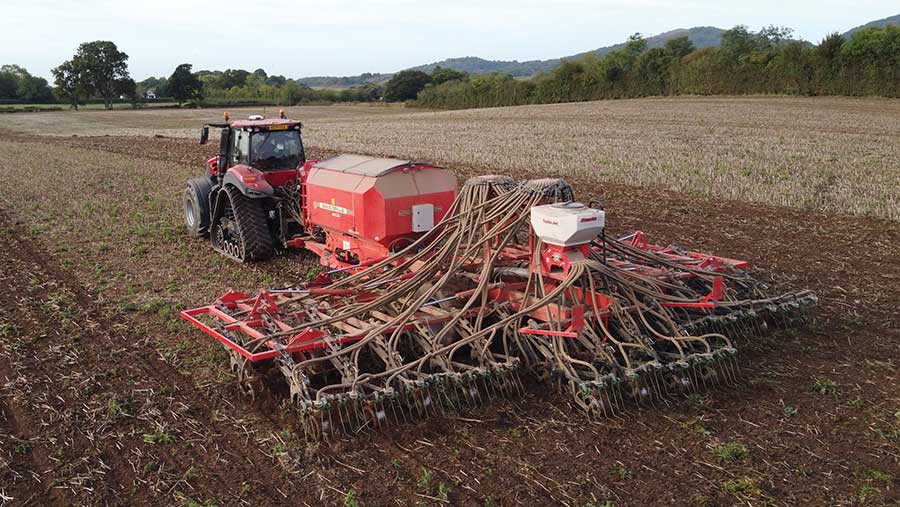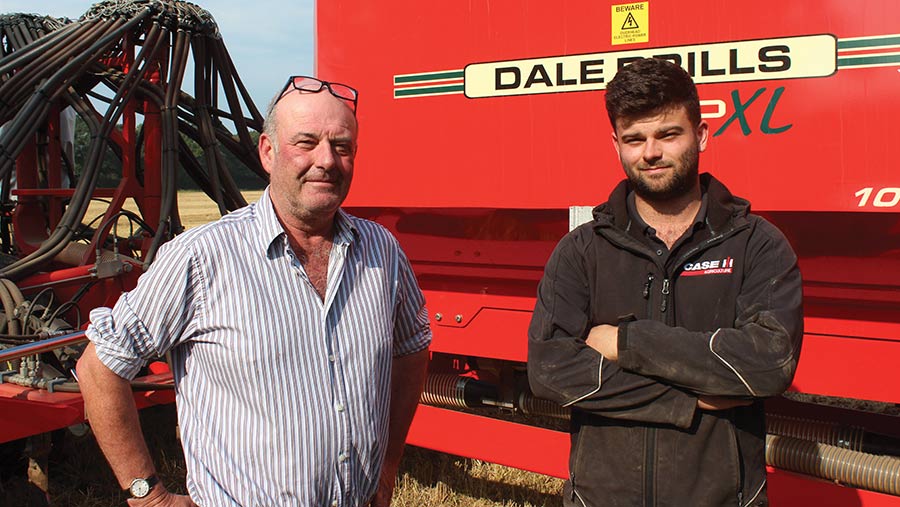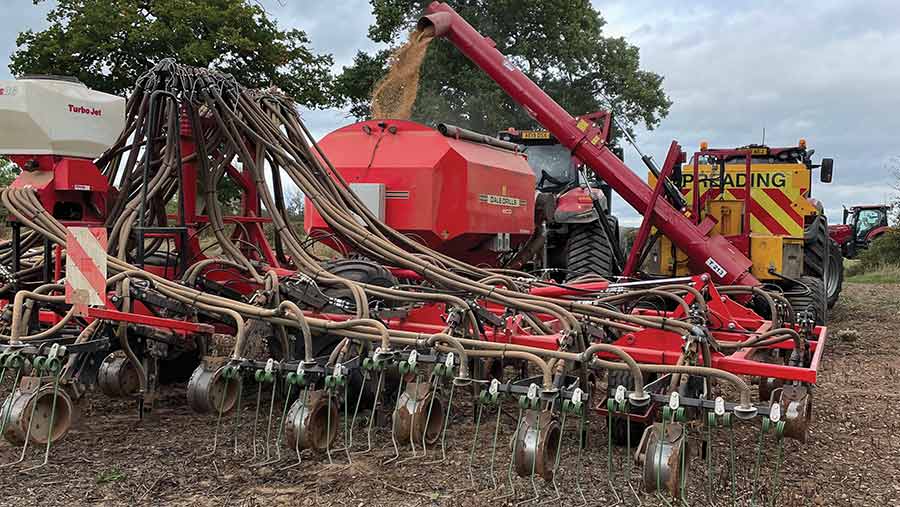Direct drills revisited: 10m Dale Eco XL
 © David Fellows
© David Fellows This year marked a decade of Dale Drills at Whiting Ash Farms in Malvern, Worcestershire, and David Fellows sees no prospect of that changing
in the future.
His latest model, a 10m Eco XL, arrived in 2019 and slots perfectly into the farm’s controlled-traffic system alongside a cultivator of the same size.
See also: Driver’s view: Simon and David Fellows’ Dale Eco XL drill
“I still appreciate what a disc drill can do, particularly in terms of accuracy and its ability to work straight into green cover crops. But the Dale’s tines give us so much more flexibility – even if the payoff is the occasional clumping of trash around the coulters.”
“Disc drills are too high risk for our system. You only have to look at the weather over the last few years – 2019 was a nightmare drilling season for everyone and 2020 got very soggy again, yet we got everything drilled on that occasion.
“The Dale is fantastic in the wet, it’s relatively low disturbance by tine drill standards, and any damage is limited to the wheelings and easily rectified the following summer in our controlled-traffic system.
“If we’d had a Horsch Avatar then it would have spent 18 months in the shed during that period due to the nature of our high-magnesium soils.
“At 10m, we’ve also got plenty of capacity to cover our 1,000ha/year, and more if necessary, so we’re future-proofed.”

Simon and David Fellows © David Fellows
Dale Eco XL (2019) specs
- Width/spacing 10m/125 and 250mm
- Coulters 12.5mm-wide tines
- Hopper 6,000 litres
- Price paid £110,000
Harrow upgrade
The only alteration to the drill, other than a new set of tungsten carbide-tipped tines after 2,000ha, has been to fit a hydraulically controlled following harrow.
“The accuracy of the old harrow wasn’t great as it involved getting out and adjusting it manually with a set of spanners.
“The new setup gives us the ability to tweak it to produce a level finish, which is occasionally necessary if the tines throw a bit of soil about – though we try and limit that by keeping top speed to a maximum of 10kph.
“We’re now looking at swapping the standard Z-shaped following tines for Vaderstad versions, which will be far more aggressive. This should give us more of a combing effect, which we will experiment with in the spring.”
Cultivator change
Despite running a low-disturbance drill, cultivations still play a central role in the establishment system to encourage a weed seed chit and hasten the breakdown of ttrash to avoid nitrogen lockup.
The only crops to be genuinely direct drilled are wheats following beans, and oilseed rape.
And it’s on the cultivator front that the most significant change has occurred since our first visit, with the Bednar Swifterdisc replaced by a Horsch Joker in 2020.
“The Swifterdisc sometimes struggled with our topography. It’s basically split into two 5m sections and as we’re working shallow – about 2in (50mm) – there’s little margin for error when it comes to following ground contours and maintaining a consistent depth.
“By comparison, the Joker is much more refined, with five sections and accumulators on the wings that keep things far more even.”
Hopper filler

© David Fellows
Given its 10m working width and up to 80ha/day output, the drill has a voracious appetite for seed, and filling the 6,000-litre hopper with bags resulted in significant downtime.
Having seen farmers in the eastern counties running drill fillers, David decided it was worth gearing up with something similar.
“Folding up, moving to a central point to fill, and then working under swinging seed bags was neither safe nor efficient. Instead, we now have all seed stored in bulk at the yard. This is then loaded into an old gritter body mounted on a trailed water bowser chassis fitted with flotation tyres.
“We found an auger for £6,500 from a firm called Pom in Poland and fashioned brackets to fit it to the rear of the hopper, so that it is fed by the gritter’s bed belts. That has slashed filling time from 30-40min with the old system to just 8min.
“The only modification we need to make is to fit greedy boards, as the current capacity is 5t – we want to increase that to match the drill’s 6t tank.”
Likes and gripes
Likes
- Works in most conditions
- Cheap to run
- Fits neatly into CTF system
- Low disturbance by tine drill standards
Gripes
- Trash occasionally tangles around tines
- Moves more soil than a disc
- Slightly less accurate seed placement than disc
- Standard “Z” harrow tines not aggressive enough

